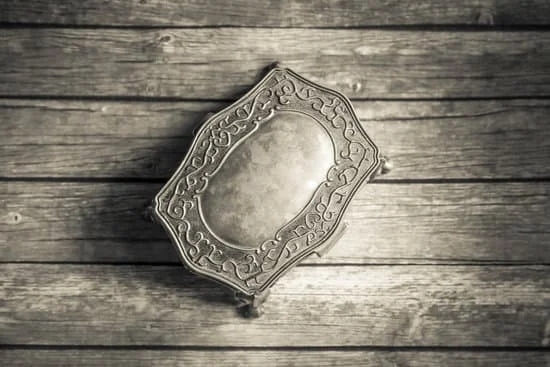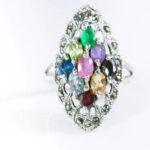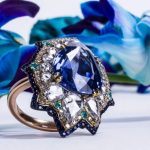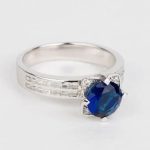Beading jewelry is one of the oldest forms of jewelry craft, with its history stretching back thousands of years. Adorned by ancient civilizations in Africa and Eurasia, beading jewelry has become a popular means for decorating items such as clothing and adornments. The vast array of beads and the many kinds of bead-making techniques has enabled the art to evolve over time, creating a diverse cultural history full of vibrant colors, exotic shapes and abundant designs.
The earliest examples of beading date back several millennia to ancient Egypt and Mesopotamia where archaeologists have discovered examples made from raw materials such as shells, stones and bones. Beading was also widespread in Ancient Europe where small ivory beads were used for decorative purposes. As new materials such as glass and clay were developed, the possibilities for artisans increased significantly leading to an enormous variety of unique creations.
In modern times, beading jewelry has gained immense popularity due to its versatile nature and availability of pre-made components suitable for any type of taste or design. Bead makers can choose between various materials such as metal, plastic, glass and crystal – each capable of producing dazzling jewels that perfectly represent their individual styles.
For this reason beading not only has a long standing tradition but it also continues to form a large part of many fashion trends utilising contemporary technology alongwith more traditional methods like handmade sewing or knotting techniques according to archaeological discoveries. This combination opens the door for endless innovative ideas which are only limited by one’s imagination.
Ancient Beads
The history of beadmaking dates back thousands of years and spans various cultures. Beads have been made from many different materials including stone, shells, wood, clay, and metal. Ancient beads were often used as a form of currency and spiritual adornment.
For example, the ancient Egyptians used them to create dazzling necklaces and amulets that showed wealth or status. Ornaments made of beads were also important in many other societies such as those in east Africa, South-East Asia, and Europe.
Early examples of ancient beads date back as far as 40,000 BC when Neanderthal jewellers used tusk ivory for their creations as well as animal teeth and cut-up shells from the Mediterranean Sea. In particular, the use of red ochre was integral in crafting beautifully decorated beads since it was readily available at the time; carved pieces would then be polished to further enhance their colours.
Beadmaking increased in popularity during the Renaissance period with growing trade between nations and more access to foreign stones; precious gems like turquoise and lapis lazuli were especially desired to add colour to jewelry. Jewellers could now manipulate intricate designs into gold or silver by hammering it thin enough so that they could thread small pieces into desired shapes.
Techniques such as wire wrapping allowed even more complex designs featuring subtle details like twists or curves along its length; this style is still popular today.
Apart from being viewed as decorative accessories or symbols of wealth, beads have also long been associated with spirituality for centuries: prayers were often said using a rosary with beautiful gemstones added for protection against evil spirits. Similarly, glass Millefiori from Italy (which means ‘a thousand flowers’) became popular during the 19th century due to its link with faith; cross shapes or miniature portraits of saints being amongst the most requested items.
Truly mesmerising pieces could be created by stacking thin slices of molten glass together until large pieced were formed – these creations had a magical quality about them – bewitching all who approached.
The Beginnings of Beadwork Around the World
Beading has been around for centuries, and the first use of beads for jewelry is believed to be about 75,000 years ago. While the earliest use of beads was to adorn clothing, jewellery made from beads soon followed. Archaeological evidence shows that beadwork was being produced in Europe by at least 40,000 years ago and was represented in many shapes and sizes throughout history.
In Africa, beading became a traditional art form as early as 10,000 BCE. Ancient cultures often used natural materials like shells and stones to make primitive jewelry. In Ethiopia, it is believed that the earliest forms of glass bead jewelry were created around 3,500 BCE. Copper wire was also used to bind smaller pieces together and create intricate jewellery that included necklaces and other pieces of wearable art.
As far back in time as they are documented ,the use of Beaded Jewellry was not limited just to ornamentation but symbolic meaning or significance put forth through its design. Over time each culture developed characteristics unique only unto itself so worthy of observation ,appreciation. From death rituals shaping style into a tribute piece speaking towards calming passing spirits making their journey towards afterlife. To special occasions using Jewelry Beads solely conveying solemn respect amongst One anothers tribe.
Different Types of Beads and Their Cultural Significance
The history of bead jewelry dates back as far as 78,000 BC. Small beads made from bone, shell and other materials were used to make jewelry as early humans sought decoration for themselves or to bring luck or protection.
Beads in various shapes have also been found in Ancient Egyptian, Greek and Roman archaeological sites dating back several thousands years ago. In the early Middle Ages, glass beads had also come into use, with some of the oldest beads being found in Africa and Europe.
There are many different types of beads with individual cultural significance. Faceted gems and crystals that originated in the Middle East were among some of the most popular during this period. These gems were believed to protect their wearer from evil forces both physical and metaphysical, making them highly desired items. Other popular beading materials included coral, turquoise, amber, lapis lazuli and pearls – both freshwater and saltwater varieties.
In recent times beading has evolved beyond just Jewelry making more towards a medium for artisans to express their creativity through intricate crafts like creating Chokers and Necklaces. Semi-precious stones such as opalized agate , czar sea , blue quartz etc have come into vogue due to their ability to bestow beauty which is not just aesthetic but also boosts your aura.
Beading has become a preferred hobby of many DIY goers who create pieces often inspired by nature itself – incorporating natural elements such as flowers , leaves stems to create rustic appeal which is trending quite well currently. The portability aspect of beading coupled with its premium feel makes it an ideal choice for those looking for something that requires little effort yet rewards them heavily with compliments .
The Art of Bead Embroidery
The history of beading is rooted in centuries of tradition, with evidence of bead embroidery being found from ancient Egypt throughout the Victorian era. Beads were used for more than just adornment; these colorful little “gems” served as symbols of wealth, social status, and even spiritual importance.
Artistic symbolism was an important representation for cultures around the world, with various beads representing attributes such as strength and protection. Despite its nearly-ubiquitous role in human societies across history, beadwork didn’t gain popularity until the mid-19th century.
During this period, bead embroidery began to take on a more decorative purpose due to a surge in its availability to wider audiences. Smaller glass beads called seed beads gained particular attention due to their affordability and popularity among women who wanted to show off their artistic creations on clothing or accessories like shawls and handbags.
This newfound interest then spurned interesting innovations like intricate lace designs featuring intertwining strands of seed beads. Socialites quickly adopted the craft, adding it decorate clothing or alter existing materials with eye-catching results.
The presence of beading also became notable in foreign countries like India, where skilled artisans crafted exquisite pieces with complex techniques that combined beading with screen-printing techniques known as kantha work or chikankari embroidery. This combination set beaded jewelry apart from anything else available at the time because it created textured surfaces that brought art to life.
As this skill became increasingly prized by avid collectors all over the world, bead embroidery was taken up by top designers and fashion labels that found purpose and value in this unique combination of style and history.
Today, we are fortunate enough to enjoy generations worth of beading artistry through our own creations as well as those seen on international runways everywhere. Whether you’re learning your mother’s secret patterning methods or trying out new tutorials online, the potential for innovative designs is endless; so let’s take inspiration from our ancestors to create something truly special and timelessly beautiful.
Exploring the Different Kinds of Beaded Jewelry
Beading jewelry is one of the oldest crafts known to man, with evidence that beads have been used in jewelry design since ancient times. Evidence of beaded jewelry can be found all over the world, from cultures such as those in the Middle East and South America to northern Europe and America. Beaded jewelry has been used to express cultural identity, social status, religious beliefs, and also decorative flair.
The traditional materials used for beaded jewelry are usually natural stones or shells combined with metal pieces such as copper or silver. The combination of these materials has enabled people to create intricate, detailed necklaces, earrings, bracelets and other pieces of wearable art that could last for many years.
With advances in manufacturing processes however, a vast array of different materials can now be used to create beautiful and unique pieces. Semi-precious stones, glass beads, ceramic shapes, precious stones and plastic components are a few examples of the newer supplies which can now be used for creating enchanting designs.
In today’s modern age plenty of new options and varieties exist when choosing beadwork for jewellery projects. Your choices range from seed beads to insect wings; from antique Venetian glass trade beads to finishes like rutilated quartz; from enameled charms to metal sequins; from carved ivory amber to specialized clasps.
There are endless possibilities when it comes to designing exquisite and creative jewellery pieces using different beads. Additionally countless techniques have evolved over time including off-loomWeaving methods such as peyote stitch or brick stitch , crocheting with thread around gems, knotting between pearls or fiber optic cable cabling around various metals elements as forms of divinity structures towards imaginative concepts picturesque creations.
No matter what your preferred bead type is on whatever technique you choose – modern bead working gives no limits when it comes to depicting inspiration through creative use within design art where the imagination knows no borders.
The Power of Beads
Throughout the history of civilizations, beads have been used for a variety of purposes. Beading jewelry has been a popular trend since the Paleolithic period more than 40,000 years ago. The earliest beads were made from animal bones, teeth and shells and then eventually primitive man moved on to clay and rocks.
In some parts of the world, especially in areas with large deposits of semi-precious stones – such as Tibet, India, China and South America – beading jewelry is still crafted in much the same way as it has always been done. While many of the techniques have remained largely unchanged over time, the materials and methods used have changed significantly.
Glass beads are one example: first emerging in the Mediterranean in Roman times before being discovered again by European traders at a much later date.
Cultural exchange has played an integral role in the evolution of beading jewelry throughout history. As travelers crossed continents or came into contact with different cultures, they spread knowledge about particular beading techniques or styles that had previously been unknown to them. During these early interactions between peoples of distant lands, items a talented craftsman could make was often seen as a form of trade or dowry between families or tribes.
Rubies from India were often strung together with moonstones from Africa; Chinese pearls were weighed against sapphires from Afghanistan; semi-precious stones became prized currency for bartering goods across borders. During this era of commerce, rare pieces would collect value over time due to their beauty or scarcity – proving that jewelers must also possess a keenly developed eye for spotting valuable gems.
Modern day beading jewelry utilizes what’s now available on Earth while still paying homage to well-crafted ancient items scattered around our world. Newer materials – gold plating instead of sterling silver; faux fur fleeces instead of animal skins – allow both professional craftsman and novices alike to discover how materials can interact with each other to create interesting pieces that grace runways every season.
Symmetry remains key but asymmetrical designs are becoming popular – fringe earring accents now dangle off edges instead buttons replacing classic hoop earrings?
Jewelers everywhere use shapes like triangles and circles that lend movement for ever changing designs yet exuding classic elegance remain timeless favorites amongst those seeking after special occasions. With today’s infinite possibilities within jewelry making there’s no shortage when it comes to exploring with creativity what can be made out of nothing.
Shaping the Future with Beads
Beading jewelry has come a long way since the pre-historic era with beads being used for both ornamental and religious purposes. Today, bead jewelry can be seen in different forms that range from traditional to modern. From colors and shapes to materials, the variety and creative potential of beads has helped form an entire industry dedicated to beading.
With the rise of DIY culture, it’s almost impossible to imagine a world without beading. This resurgence of crafts and hobbies is closely linked to an equally booming home decor industry as people strive to create interesting art pieces that really showcase their own personalities.
Whether made out of natural elements like semi-precious stones or plain glass seed beads – each are a popular pick and available in many colors, sizes and shapes. Some ardent crafters have accessorized movies with ready-made beaded jewellery while celebrity fashion designers incorporate antique charms with colourful crystals in their collections regularly.
From bright neon neons and elegant pinks to pastel blues to vibrant greens – there are plenty of shades out there for all types of occasions. This has led customers seeking out interesting designs for everything from themed parties and luncheons to classic dinner invitations.
Weaving together intricate patterns reveals some truly captivating combinations that several connoisseurs never fail to admire even in today’s digital era where minimalism is trending heavily on social media platforms globally. Recent trends such as bracelet stacking can be seen across multiple age groups who are happy to flaunt their personal style while having some fun in the process.
The freedom experienced with designing one’s own piece allows people from all walks of life the chance express their true individuality through this creative medium. With more consumers becoming aware about ethically sourced materials , alternative options such as upcycling existing beads by combining them in new combinations constantly take center stage which does wonders for reusing preloved items.
Apart from just lifting spirits during hard times , wearing vibrant colours is known for aiding positive dialogue between individuals belonging from different socio – economic backgrounds worldwide.
When armed with beautiful accessories at affordable prices thanks to dedicated bead makers everywhere , one could go onto accessorize every outfit. In fact this very thing has happened recently when customers across Southeast Asia have pushed these unique handmade creations into mainstream fashion magazines – setting precedence for many places still yet undiscovered but full of hidden potential .

Welcome to my jewelry blog! My name is Sarah and I am the owner of this blog.
I love making jewelry and sharing my creations with others.
So whether you’re someone who loves wearing jewelry yourself or simply enjoys learning about it, be sure to check out my blog for insightful posts on everything related to this exciting topic!





